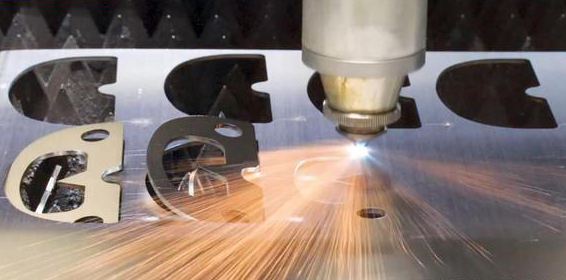As a common processing method in the modern manufacturing industry, the laser cutting machine breaks the traditional processing method. And it is widely used in all walks of life with a new cutting process. Especially in recent years, it has developed in a “rocket style”.
Many cutting machines need to use auxiliary gas when they are in use. So do laser-cutting machines need auxiliary gas?
The answer is yes.
Generally speaking, laser cutting machines, especially metal laser cutting machines, need to use auxiliary gas. This can blow away the slag in the coaxial slit. And it can also cool the surface of the processed object, reduce the heat-affected zone, and cool the focusing lens preventing smoke and dust from entering the lens holder to contaminate the lens and causing the lens to overheat.
Of course, there are also small laser cutting machines in the laser cutting machine. The processing area of this kind of laser-cutting machine is small. And it is generally possible to use no auxiliary gas.
Benefits of Using Assist Gas
1. Cooling to prevent the material from hardening, that is, heat treatment.
2. Air pressure blows away the molten metal slag from cutting.
3. Assist combustion.
Now we know that the laser cutting machine needs auxiliary gas when it is in use. So what kinds of common auxiliary gases are there?
The metal materials that laser cutting machines often cut mainly include carbon steel, stainless steel, aluminum, copper, and brass. The commonly used cutting auxiliary gases mainly include oxygen, nitrogen, and air.
How to choose the appropriate cutting gas for different cutting metal materials. Making it can not only effectively increase the cutting speed, but also ensure the cutting quality well.
Characteristics of the three auxiliary gases
1. Air
Air can be supplied directly by an air compressor, so the price is very cheap compared to other gases. Although the air contains about 20% oxygen, the cutting efficiency is far less than that of oxygen. And the cutting ability is similar to that of nitrogen. Generally, it is used when the cutting plate is not relatively thick and the requirements for the cutting end face are not too high. There will be a small amount of oxide film on the cutting surface. But it can be used as a measure to prevent the coating layer from falling off. The end face of the incision is yellow.
2. Nitrogen
Nitrogen is an inert gas. When some metals are cut with oxygen, an oxide film will be formed on the cutting surface. And nitrogen can be used to prevent the oxidation-free cutting of the oxide film. The non-oxidized cutting surface has the characteristics of direct welding and coating, and strong corrosion resistance. The end face of the incision is whitish.
3. Oxygen
Oxygen mainly plays a combustion-supporting role. The use of oxygen by laser cutting machines can increase the cutting speed and thicken the cutting thickness. Oxygen is suitable for thick plate cutting, high-speed cutting, and very thin plate cutting. The incision end surface is black or dark yellow.
Of course, in addition to the above functions, the auxiliary gas has many common functions. For example, these gases can blow away the slag generated during cutting, protect the lens, prevent the slag from sticking to the lens, and prolong the service life of the lens. Air and nitrogen also have a cooling effect and cool the cutting head.

So, how do these auxiliary gases cooperate with different cutting metals to complete the cutting?
1. Carbon steel
Generally, the laser cutting machine cuts carbon steel materials, and the gas used will vary according to the thickness. Generally, when cutting with oxygen, the cutting edge will be slightly oxidized. For a plate with a thickness of 4mm, the high-pressure cutting effect with nitrogen as the processing gas will be better, and the cutting edge will not be oxidized. For plates with a thickness greater than 10mm, good results can also be obtained by using a dedicated laser electrode plate and oiling the workpiece surface during processing.
2. Stainless steel
When the cutting material, edge oxidation does not matter, oxygen can be used to laser cut stainless steel; if it is necessary to obtain an edge without oxidation and burrs, it is recommended to use nitrogen cutting.
3. Aluminum
Among metal materials, aluminum has high reflectivity and thermal conductivity. Generally, when the thickness of an aluminum plate is less than 6mm, it can still be cut by a laser cutting machine, depending on the alloy type and laser capability. When cutting with oxygen, the cutting surface will be rough and hard; when using nitrogen, the cutting surface will be relatively smooth. Pure aluminum has high purity and is difficult to cut. Aluminum can only be cut when the “reflection absorption” device is installed on the fiber laser cutting machine system, otherwise, it is easy to damage the laser equipment components.
4. Copper and brass
Copper and brass are also highly reflective and thermally conductive materials. Generally, brass with a thickness of less than 1mm can be cut by nitrogen laser cutting; copper with a thickness of less than 2mm can also be cut, and laser cutting must use oxygen.
Now we all understand the reasons why laser cutting machines need to use auxiliary gas and how to choose the gas. If you are interested in this machine, come and buy it!






